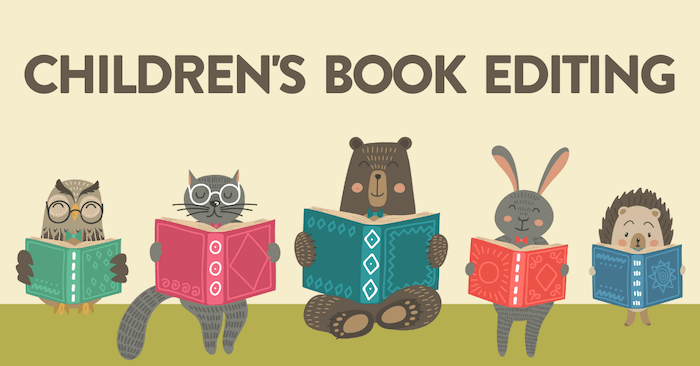Dialogue plays a crucial role in children’s literature. It brings characters to life, moves the plot forward, and helps readers engage with the story. In children’s books, dialogue must also be accessible, age-appropriate, and engaging to captivate young readers. Editing dialogue in children’s literature is a delicate process that requires careful attention to language, pacing, and the developmental stage of the audience. This article explores the art of editing dialogue in children’s books and how to make characters speak in a way that resonates with young readers.
The Importance of Dialogue in Children’s Literature
Dialogue is one of the most direct ways for readers to connect with characters. It reveals personalities, emotions, and relationships. In CHILDREN’S BOOK EDITING SERVICES , dialogue is often the driving force behind a story’s movement, especially when the narrative needs to be simple and engaging.
For young readers, who may be new to the world of storytelling, dialogue serves as an essential tool for understanding the dynamics between characters. It breaks up descriptive text, making the story more dynamic and easier to follow. Dialogue also mirrors the way children communicate in real life, making it a relatable element in the narrative. Through well-crafted dialogue, characters become more relatable, helping children see themselves in the story.
Editing dialogue is, therefore, crucial to ensure that it remains an effective vehicle for communication and engagement. The dialogue must be natural, but it also needs to serve specific purposes within the story, such as driving the plot, enhancing relationships between characters, or conveying moral lessons in subtle ways.
Crafting Age-Appropriate Dialogue
One of the most significant challenges in editing dialogue for children’s books is ensuring that the speech patterns and language are appropriate for the target age group. Young readers are still developing their language skills, so the dialogue needs to be accessible, clear, and easy to follow.
When editing dialogue, the first step is to consider the vocabulary. For younger readers, especially those in early childhood, the language must be simple and direct. Complex sentences, difficult words, and abstract concepts can confuse young readers and pull them out of the story. Editors must ensure that the dialogue is pared down to its essence without losing its emotional or narrative impact.
In books for older children, dialogue can be more nuanced, incorporating slightly more sophisticated language while still keeping it relatable. The key is to balance complexity with clarity, ensuring that the readers can grasp the meaning without feeling overwhelmed.
Additionally, age-appropriate dialogue means paying attention to how children actually speak. Children’s speech is often more direct and emotionally charged than adult conversations. Editors need to ensure that the dialogue captures the way children naturally communicate while still serving the needs of the story.
Making Characters Distinct Through Dialogue
In children’s literature, each character’s voice should be distinct and recognizable. This is especially important because children are still learning to navigate complex social interactions and relationships. Distinct character voices help readers differentiate between characters and understand their personalities, motivations, and relationships.
Editing dialogue involves ensuring that each character has a unique voice that reflects their age, background, personality, and role in the story. For example, a shy character might speak in shorter, hesitant sentences, while a confident character might have more assertive and playful dialogue.
Editors must pay careful attention to dialogue tags and character-specific speech patterns. Over-reliance on dialogue tags like “he said” or “she exclaimed” can become repetitive and distract from the flow of the story. Instead, dialogue should be clear enough that readers can recognize who is speaking through word choice, tone, and pacing alone.
In addition to giving characters distinct voices, editors must ensure that the dialogue remains consistent throughout the book. A character who speaks formally in one chapter should not suddenly adopt a casual tone without a clear reason. Consistency in dialogue helps to maintain character integrity and ensures that readers can follow the characters’ development throughout the story.
Balancing Realism and Storytelling
While it’s important for dialogue in children’s books to sound natural, it doesn’t need to mimic real speech perfectly. Real-life conversations are often filled with pauses, filler words, and interruptions, which can be distracting and confusing for young readers. When editing dialogue, it’s crucial to strike a balance between realistic speech patterns and clear, purposeful dialogue that serves the story.
In children’s books, every line of dialogue should have a purpose. Whether it’s revealing a character’s emotions, advancing the plot, or providing important information, dialogue must be intentional. Editing dialogue involves cutting out unnecessary words or exchanges that don’t contribute to the story’s progress.
This is especially important in shorter children’s books, where every word counts. In picture books and early readers, the space for dialogue is limited, so editors must ensure that each line is meaningful and moves the story forward. Extraneous dialogue that doesn’t serve a clear purpose should be removed or revised.
At the same time, it’s essential to retain the emotional authenticity of the dialogue. Children’s books often deal with themes like friendship, family, and personal growth, and the dialogue should reflect the emotional stakes of these themes. Editors need to strike a balance between simplifying the language for clarity and preserving the emotional depth that makes the dialogue meaningful.
Enhancing Dialogue for Pacing and Rhythm
Dialogue can significantly impact the pacing of a children’s book. Well-paced dialogue helps keep young readers engaged, while poorly paced dialogue can slow down the story and lose their interest. Editing dialogue for pacing involves adjusting the length and rhythm of conversations to match the story’s flow and maintain reader engagement.
Short, snappy dialogue can increase the pace of a story and create a sense of excitement or urgency. This is particularly effective in action scenes or moments of high tension. Conversely, longer, more reflective conversations can slow the pace and allow for character development or emotional depth. Editors need to assess the pacing of the dialogue to ensure that it aligns with the overall flow of the story.
The rhythm of dialogue is also important in children’s books, especially in those for younger readers. Children respond well to rhythm and repetition, so editors may look for ways to incorporate rhythmic elements into the dialogue. This can be done through word choice, sentence structure, or the repetition of key phrases.
Editing for rhythm also involves ensuring that the dialogue has a natural flow. Stilted or overly formal dialogue can disrupt the rhythm of the story and make it harder for young readers to engage with the characters. Editors work to smooth out any awkward or unnatural dialogue, making sure that the conversations feel fluid and authentic.
Addressing Cultural Sensitivity in Dialogue
Children’s literature has a profound impact on shaping young minds, and it’s essential that dialogue reflects the diversity of the real world in a respectful and accurate way. When editing dialogue, special care must be taken to ensure that characters’ speech is culturally appropriate and free from stereotypes.
Cultural sensitivity in dialogue involves being mindful of how different characters express themselves, particularly if they come from diverse backgrounds or communities. Editors need to be aware of potential biases or cultural misunderstandings that may be present in the dialogue and work to address them.
In some cases, dialogue may need to be revised to ensure that it accurately reflects the way a character from a particular culture or background would speak. This might involve researching speech patterns, idioms, or expressions specific to that culture. Editors also need to consider how children from different backgrounds might interpret the dialogue and ensure that it is inclusive and respectful.
Sensitivity readers can be a valuable resource in this process, providing insights into how dialogue might be perceived by readers from diverse communities. By ensuring that dialogue is culturally sensitive, editors help create stories that are inclusive and relatable for all young readers.
Dialogue in Picture Books vs. Chapter Books
The approach to editing dialogue varies depending on the type of children’s book. In picture books, the dialogue is often sparse, with much of the storytelling carried by the illustrations. As a result, every word of dialogue in a picture book must be carefully chosen and serve a clear purpose. Editors of picture books focus on making the dialogue concise and impactful, ensuring that it complements the visual elements of the story.
In chapter books, there is more room for dialogue, but it still needs to be carefully edited to maintain reader engagement. Chapter books often have more complex plots and character development, so the dialogue plays a larger role in advancing the story and revealing character dynamics. Editors of chapter books focus on ensuring that the dialogue is clear, age-appropriate, and consistent with the tone and themes of the story.
In both picture books and chapter books, the dialogue must be accessible to the target age group. However, the level of complexity and the length of the dialogue will vary depending on the readers’ developmental stage. Editors need to adjust their approach to dialogue editing based on the type of children’s book they are working on, ensuring that the dialogue serves the needs of the story and the readers.
Dialogue as a Tool for Emotional Connection
One of the most powerful aspects of dialogue in children’s books is its ability to create emotional connections between characters and readers. Through dialogue, characters express their feelings, form relationships, and navigate challenges. Children, who are still learning to understand and manage their own emotions, often look to characters in stories as role models or mirrors of their own experiences.
When editing dialogue, it’s important to ensure that the emotional tone of the conversations is authentic and relatable. This involves paying attention to the way characters express their feelings and how their words reflect their emotional states. Dialogue that feels forced or insincere can undermine the emotional impact of the story, while well-edited dialogue can enhance the reader’s emotional connection to the characters.
Editors may work to refine the dialogue to make the emotional subtext more apparent, without being overly explicit. This can involve adjusting word choice, sentence length, or the rhythm of the conversation to better convey the characters’ emotions. By enhancing the emotional depth of the dialogue, editors help create stories that resonate with young readers on a deeper level.
Conclusion The Art of Editing Dialogue in Children’s Books

















